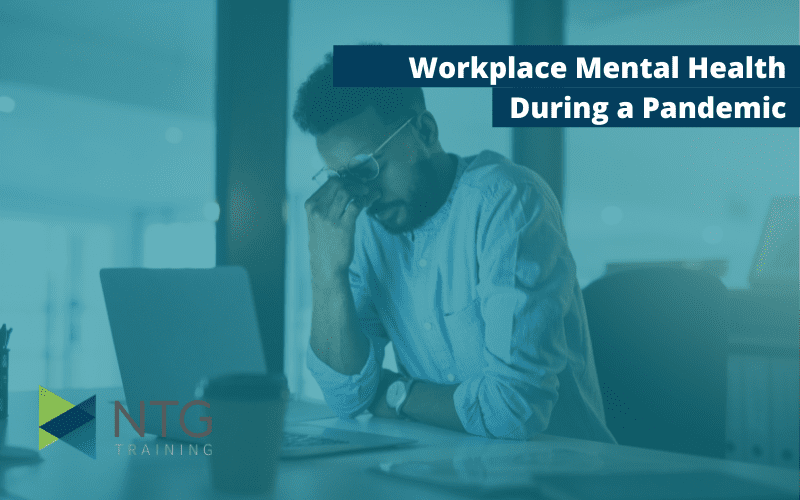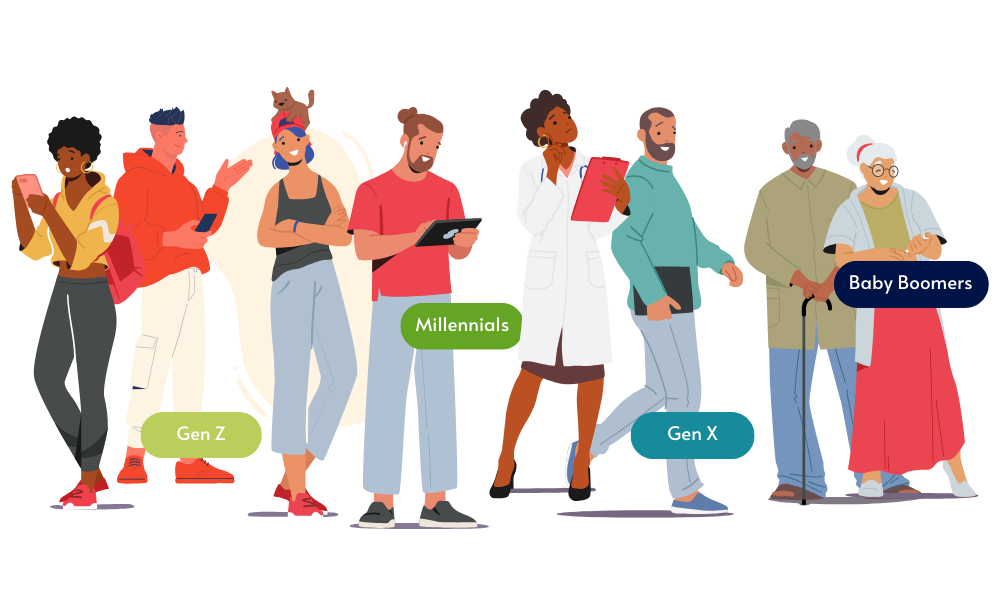As with any topic of discussion, the consensus on ‘is working from home good for people’ is divided, and the opinions you hear are based on which newspaper you read, which social media platform you’re on, or the level of job your peers are in.
That’s why it’s so hard to get a final answer when it comes to how the pandemic has affected worker’s mental health.
Here at NTG Training, we run mental health courses for the workplace often, and we see a lot of common issues pop up that affect worker’s mental health the most. Some of these include:
- A poor work/life balance
- Working hours / commitments that are difficult to manage
- High stress environments
- Not getting on with colleagues
- Not enough opportunities for development and progression.
Of course mental health is an extremely complex topic. It’s often a mix between environmental impacts and things that are simply down to brain chemistry. However, be reviewing these common complaints, we can begin to paint a picture of what the pandemic has taught us in relation to mental health in the workplace.
So as employers, let’s take a look at how we can apply some data from the pandemic to creating a mental-health friendly environment:
A Poor Work / Life Balance & Long Working Hours

Every individual worker is different. According to a survey by the Royal Society for Public Health, 45% of people thought working from home was better for their health and wellbeing, compared to 29%, who believed it was worse.
The average UK employee works about 34.5 hours a week, but this can rise to as much as an average of 43 hours a week for demanding roles like accountancy. Data from 2018 indicates the average commute is around an hour a day. When you combine those numbers, it’s easy to see why UK workers feel they’re not getting enough time to do things outside of work – especially for those with kids!
For employers, it’s a tricky one and it’s going to require some flexibility and compromise. Of course, the first consideration is what can the company feasibly do?
If you’ve just invested in a big premises lease pre-pandemic, the last thing you want is for it to be empty. In this case, you could instead offer ‘core hours’ to your employees where they must be in the office, but outside of those hours they could choose where they prefer to work, and when they prefer to work. Simple time management systems online can ensure traceability and that employees are clocking in the correct amount of hours.
Other businesses, especially those that aren’t office-based such as warehouses and manufacturing facilities, may not have this option. Their shift hours can be an important part of maintaining the right levels of production and safety protocols. In this case, an employer could instead offer other benefits such as better shift patterns, more scheduled weekends off and better pay and benefits for unsociable hours.
Then of course there are the businesses who feel like the pandemic has taught them they don’t need the expense of an office at all. In this situation, a survey of your employees should highlight if there’s a need for an office environment. Employers who find a portion of their employees prefer the office could offer a fund for at-home equipment, or take out a flexible lease on a shared-space office, where employees could head to work whenever they prefer to escape. Many landlords are now offering these options.
High Stress Environments & Not Getting On With Colleagues

In the past, you may have been taught that a team building day can solve anything, but that isn’t so. The fact of the matter is, there’s always going to be people in your business who don’t mesh together. Having a similar job role does not necessarily mean they’re similar people and this can often lead to the workplace becoming an unpleasant and stressful environment.
Likewise, if your workplace is generally high-stress with deadlines, high amounts of activity or is loud, employees are more likely to find their mental health in decline.
The first thing an employer can do in this situation is to make it very clear that managers are open to discussions about mental health. You should ensure managers are trained in mental health, and do not create a stigma surrounding it with their language or actions. If an employee feels like they cannot talk to a manager, they will often bottle up stressful feelings until they become worse and it all comes to a head.
Try putting up posters in public and private spaces like bathrooms. Offer in-house help, perhaps with a dedicated mental health trained member of staff, but also offer numbers, contacts and places employees can go outside of work.
When you receive feedback, make sure you as an employer heed it. Make reasonable adjustments to accommodate your employees mental health needs, or you may end up with a high staff turnover, costing the business a lot more in the long run.
Work hard to create spaces where staff can take a mental health break if it’s appropriate to do so. Somewhere quiet, private and with access to fresh air. Trust us, ten minutes lost to a mental health break is well worth it, studies show that a moment to revaluate and rest can lead to higher levels of productivity and less mistakes.
Opportunities for Development and Progression

Sitting at home, or on furlough, employees have had a lot of time to think. This has led to many looking into new career paths, as they felt like their current role had stagnated. It goes to show that money isn’t the main motivator for employees, and actually in surveys, opportunities for progression and development often rate much higher.
As we all start to return to work, it’s a great opportunity to host some one-to-one meetings with managers and staff. Try to find out what each individuals goals and aspirations are, and how you as an employer can help them.
From this data, you’ll be able to pick out training courses, apprenticeships and more to help your staff develop themselves. Of course it’s a massive benefit to you as an employer too, as you’ll have a highly skilled workforce.
If you’re interested in putting a current staff member on an apprenticeship course, you can! Apprenticeships aren’t just for new starters. If you’d like to learn more, feel free to ask us any questions you might have.






